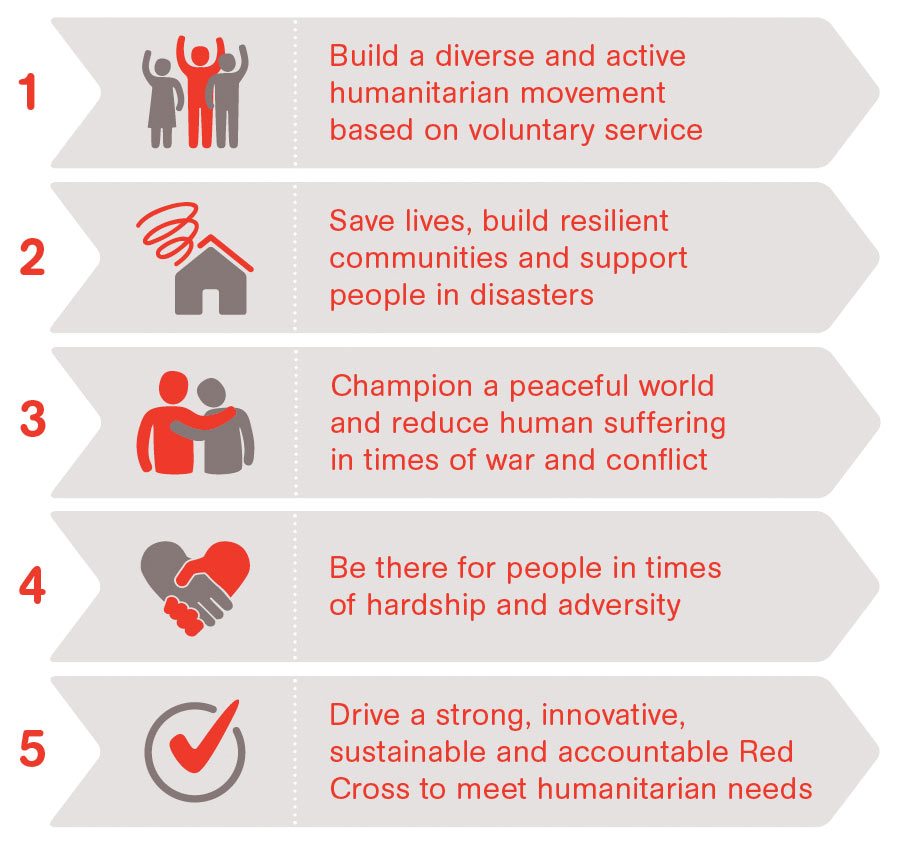This year marked the final stage of Strategy 2015, the framework that has guided our work since 2010.
Over the past five years we have worked cohesively as one national organisation, united in our vision to improve the lives of vulnerable people. Our mission under Strategy 2015 to be a leading humanitarian organisation in Australia was fulfilled by expanding and improving our services, particularly increasing our work with asylum seekers living in the community, building our partnerships with Aboriginal and Torres Strait Islander peoples and organisations, and delivering more services for people facing homelessness.
We introduced organisation-wide Ways of Working, recognising that our attitudes and methods in delivering our services are just as important as what we do. Our Ways of Working prioritise voluntary service, diversity and inclusion, and promote community development principles such as supporting communities to drive their own solutions and building on their strengths. The current Ways of Working have recently been revised to align with our new Strategy 2020 and will continue to underscore our work over the next five years.
Strategy 2015
During 2010 to 2015 our work focused on eight priority areas.
Strengthening national emergency preparedness, response and recovery
We expanded our work well beyond responding to emergencies in the moment, implementing a greater focus on preparing for emergencies before they happen and providing long-term recovery support after they occur. We increased our capacity to respond to several large-scale events at once, such as during summer 2010/2011, when more than 3,000 Red Cross people supported people in emergencies across nearly 70 Australian locations. We contributed an expert humanitarian perspective to developing emergency policy through the national Disaster Resilience Roundtable.
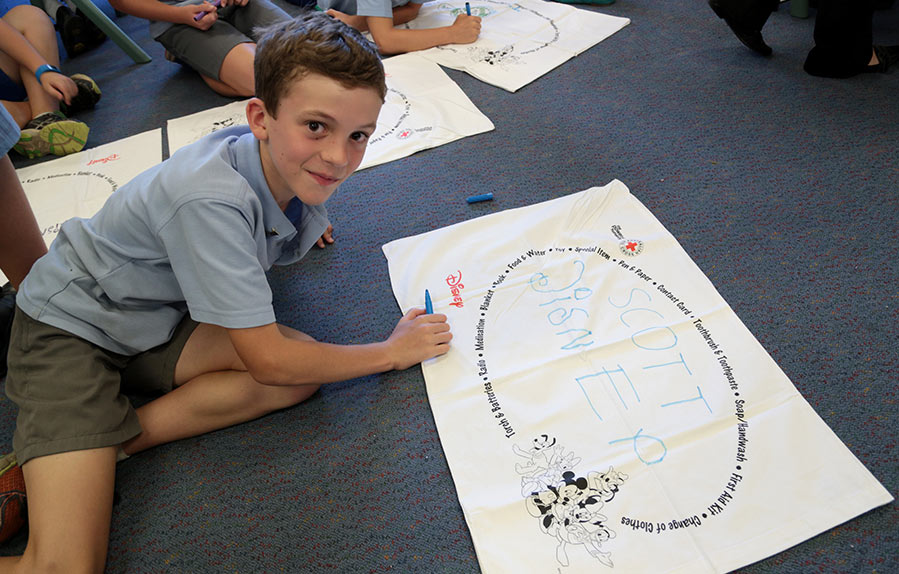
The Red Cross Pillowcase Project, sponsored by Disney, encourages children to think of a pillowcase as a basic emergency kit. It’s a fun and non-threatening way of helping young people to prepare for emergencies.
Australian Red Cross/Dilini Perera
Increasing international aid and development
We worked with 26 Red Cross and Red Crescent National Societies to ensure safer, healthier and more sustainable lives for people in the Asia-Pacific region. We ran a successful leadership program for National Societies in Asia and brought National Societies in the Pacific together to prepare for disasters, supporting more than 300 civil society organisations across 15 countries through 445 skilled Australian volunteers. Around the world, our aid workers were there to help in times of crisis: from Haiti’s devastating earthquake in 2011 to the five-year armed conflict in Syria and the Ebola outbreak in West Africa.
Championing international humanitarian law
Over the past five years we spoke to more than 72,000 Australians about protecting people in war. Our work in promoting the laws of war has ranged from training Red Cross volunteers, members and staff to engaging school students through art competitions and debates, leading interactive ‘war games’ scenarios with university students, and providing expert briefings for government, Australian Defence Force personnel, foreign correspondents and aid workers.
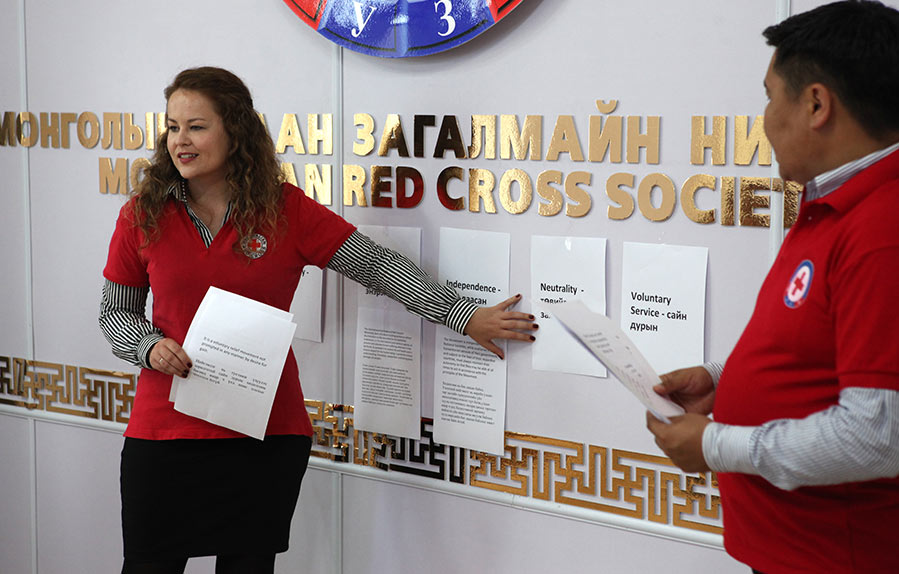
Australian volunteer Jane Munro worked with Mongolian Red Cross to support their domestic activities in humanitarian law.
Australian Red Cross/Mareike Guensche
Addressing the impact of migration
We played a central role in the expansion of alternatives to immigration detention for people seeking asylum, supporting more than 25,000 vulnerable migrants in the community since 2010. We provided emergency relief for people who were unable to access other forms of support; tracing services for those separated from their families; and ongoing, independent monitoring of conditions in all immigration detention facilities in Australia, as well as offshore centres in Nauru and Manus Island (in conjunction with the International Committee of the Red Cross). We also introduced new services for people affected by trafficking and forced marriage and worked to increase public understanding of the issues facing refugees and asylum seekers through media like our ‘And then I was a refugee’ app.
Working with Aboriginal and Torres Strait Islander peoples
We worked with Aboriginal and Torres Strait Islander peoples to build their capacity for sustainable local solutions to a range of issues, including homelessness, emergencies, food insecurity and community safety. We did this through robust and consultative program design and delivery, enabled by 140 community partnerships, which we continue to build and add to. We started to train our staff and volunteers in cultural competency, and exceeded an ambitious target of 6% Indigenous staff.*
*This target relates to staff in our Humanitarian Services and excludes the Australian Red Cross Blood Service, which is managed separately.
Overcoming social exclusion by providing bridges back into the community
Over the last five years we have experienced a threefold expansion of our work with people who are homeless or at risk of homelessness. We’ve further developed our capacity to deliver services for people who’ve been in the justice system, as well as advocating with government and other stakeholders for a justice reinvestment approach. We’ve also grown our range of mental health programs and established integrated pathways for older people to access services in the way that best suits them.
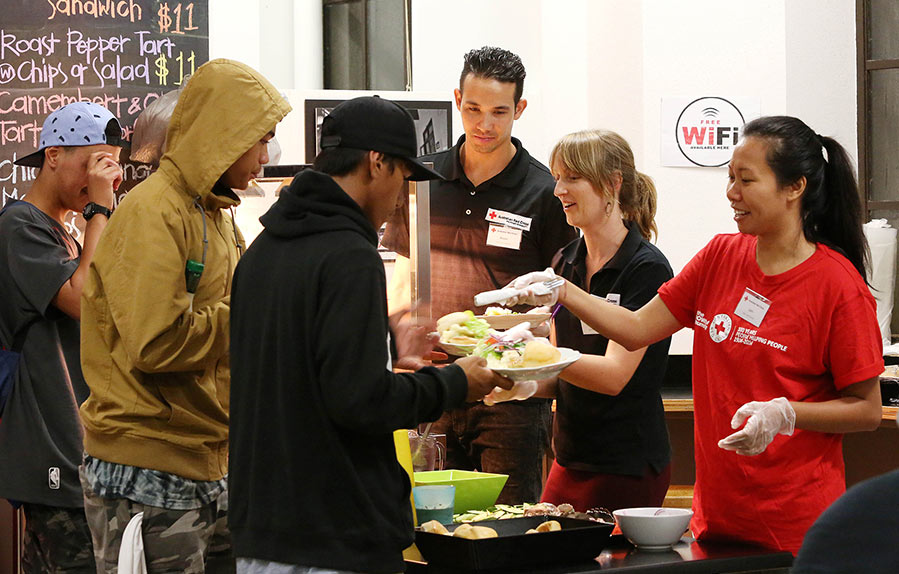
Our Night Cafe in Brisbane provides support for young people experiencing homelessness, with free hot meals, showers, information, hygiene products and first aid in a safe space away from the streets.
Photo courtesy of Quest Newspapers
Tackling entrenched locational disadvantage
We introduced a place-based approach in delivering services to disadvantaged communities, tailoring our support to their unique needs. Woorabinda, an Aboriginal community in central Queensland, is one of several areas we worked with from 2010 to 2015, helping young people to build their self-esteem, access life opportunities and reduce crime levels. Five years on from our entry into this community, data from the Queensland Department of Justice and Attorney-General shows the number of young people subject to youth justice orders in Woorabinda has decreased by 63%.
Improving the lives of patients and performing a critical role in health care through the Australian Red Cross Blood Service
We continued to align our supply of blood products to patient demand, achieving our best ever match of red cell inventory on record in 2014/2015. Our national operations became more efficient, delivering value for money and returning substantial unspent funds to governments year on year since 2010. We developed state-of-the-art scientific, medical and manufacturing capabilities and are now extending our infrastructure and capabilities to support the health care industry and make our blood service even better for the people of Australia.
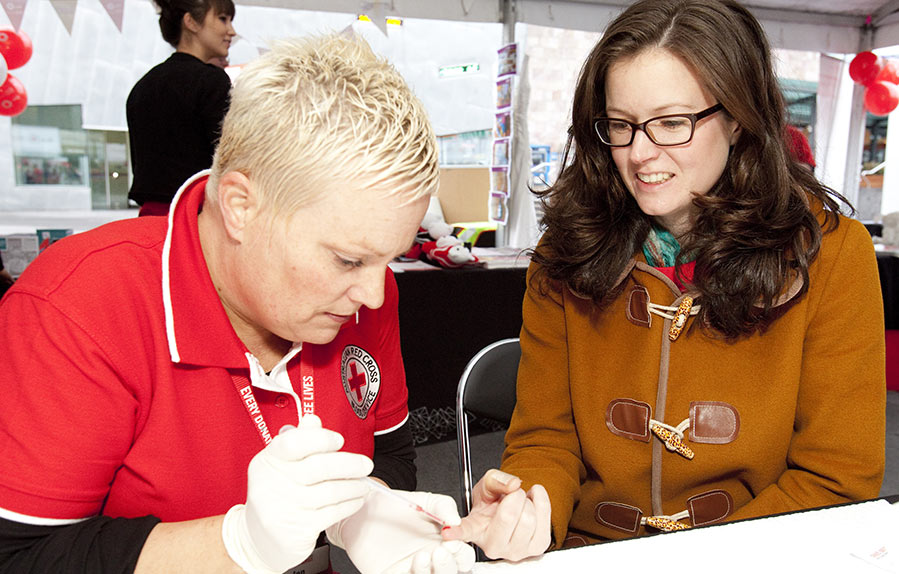
Red Cross Blood Service nurse Jenny Scott provides free blood type tests during our Centenary events in Melbourne.
Australian Red Cross/Shannon Reddaway
Strategy 2020
This year we finalised development of our next organisational strategy, which will guide us through the next five years. While our work across the eight priority areas continues, we have sharpened our focus on five strategic goals.
Our five big goals for the next five years:

